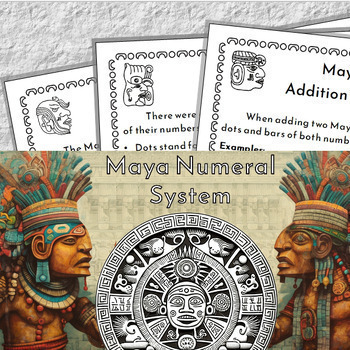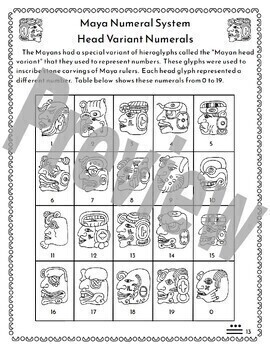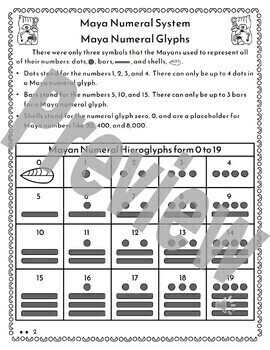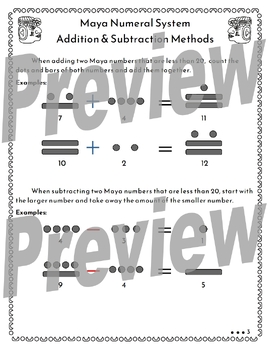Mayan Math Numeral System Workbook and Presentation
- Zip
Description
Keywords: Maya, Mayan, Hieroglyphs, Place Value, Decimal, Vigesimal, Math and Culture, History, Middle School, High School, Adult Education, Higher Education, Liberal Arts Math, Mesoamerican, Mexico, Central America, Hispanic, Native American, Indigenous, Numeracy
This workbook integrates culture, history, and math in a lesson that will benefit students by fostering a deeper understanding of mathematical concepts through real-world contexts.
The primary objective of this workbook is to acquaint learners with the Maya numeral system while offering valuable insights into their civilization. Its purpose is to delve into the significant impact of mathematics on the ancient Maya culture. Furthermore, the overarching goal is to establish a connection between mathematics, history, and culture, particularly benefiting students who may struggle with conventional mathematical concepts.
This product includes a SMART lesson plan with a recommended objective and materials; an editable PowerPoint presentation that includes animations and GIFs for the instructor; a workbook with practice problems and a description of Mayan history and culture; and a detailed answer sheet section.
Workbook Outline:
- Maya Numerals Glyphs
- Addition & Subtraction Methods
- Maya Numerals to Decimal Numerals
- Decimal Numerals to Maya Numerals
- Investigation Activities
- Head Variant Glyphs
- Definitions of Keywords
This workbook aligns with the Common Core Standards for Mathematical and Social Studies, specifically targeting grade 6 students. However, it offers an engaging and interactive learning experience suitable for learners across different middle school, high school, adult or continuing education, and higher education levels. Through problem-solving activities, students are challenged to investigate and analyze the conversion of Mayan numerals into decimals, base-10 numbers. It will expand their mathematical skills and deepen their understanding of Mayan culture with this comprehensive workbook.
The workbook content is 19 pages.
The PowerPoint presentation is 13 slides.
If you like this product, please check out the following:
Egyptian Math - Workbook, Slide Presentation, & Lesson Plan
Please Comment, Rate, and Review
Please follow me on Instagram: https://www.instagram.com/mr_drew_store/
Please follow me on Pinterest: https://www.pinterest.com/MrDrewStore/





